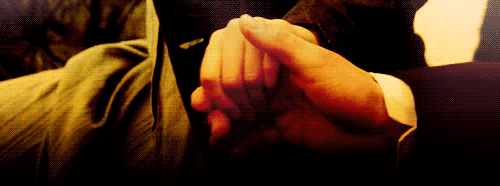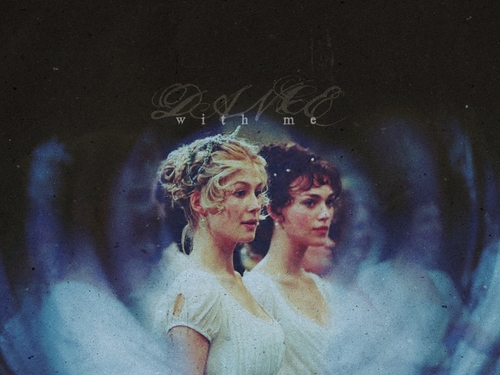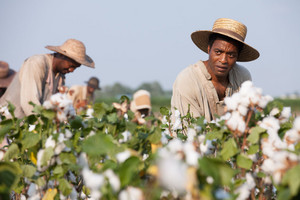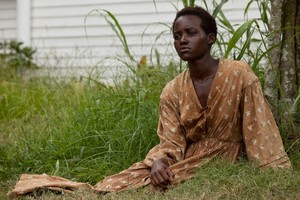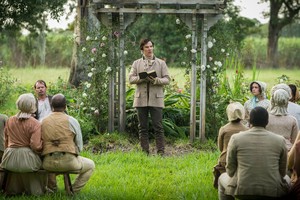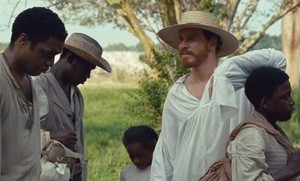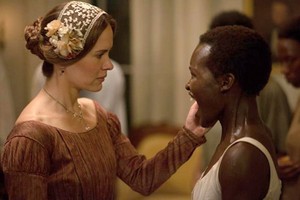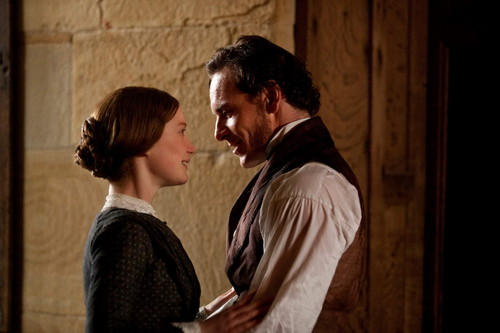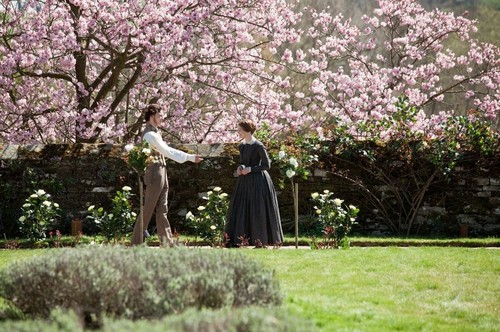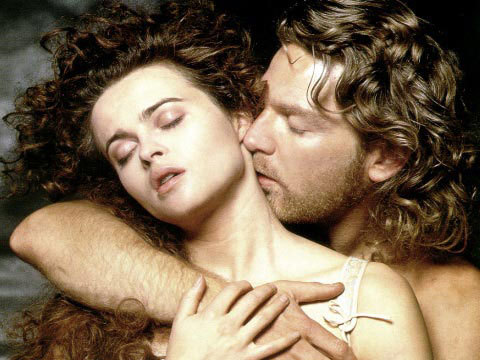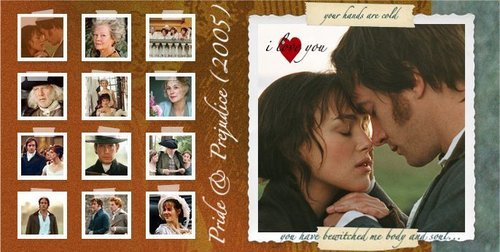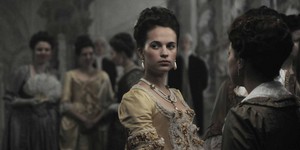"THE BLUE AND THE GRAY" (1982) Review
In 1982, CBS television aired a three-part miniseries about the experiences of two families during the Civil War. Sounds familiar? It should, for John Jakes had wrote something similar in three novels between 1982 and 1987 – namely the "NORTH AND SOUTH" Trilogy. Jakes’ novels were adapted for television in 1985, 1986 and 1994. However this miniseries was produced by Larry White and Lou Reda. And despite the mildly similar theme to the "NORTH AND SOUTH" saga, there are some vast differences.
"THE BLUE AND THE GRAY" had not been based upon any particular novel or series of novels. Instead, it was based upon a story concept by Bruce Catton, a famous historian who had written a book on the Civil War with the same title. As I had stated before, the miniseries told the story of two families and their experiences between 1859 and 1865. The two families in question are the Geysers and the Hales. The Geyers and the Hales are linked by two sisters portrayed by Colleen Dewhurst and Diane Baker. Although the miniseries revealed the families’ experiences via many characters, the two main characters in the story are John Geyser (John Hammond), who is the third son of the Virginia Geysers and Jonas Steele (Stacy Keach), a former Pinkerton agent and abolitionist who befriends John and marries the latter’s Pennsylvania cousin, Mary Hale (Julia Duffy).
Many sagas about the Civil War – especially those on television – tend to focus upon wealthy families or those from exclusive families. Prime examples of this would be 1939's "GONE WITH THE WIND", the "NORTH AND SOUTH" Trilogy (1985-1994), 1980's "BEULAH LAND" and the 1984 miniseries called "LOUISIANA". "THE BLUE AND THE GRAY" took another route in which its main characters hailed from a middle-class background. The patriarchs of the two families seemed to reek of the middle class. As I had earlier pointed out, John Geyer’s father was a middling farmer named Ben Geyser (Lloyd Bridges). And his uncle by marriage – Jacob Hale Sr. (Robin Gammell) – happened to be the owner and editor-in-chief of a small newspaper in Gettysburg, Pennsylvania.
Even after thirty-three years, I still enjoyed "THE BLUE AND THE GRAY". It has not lost its allure one bit. It rarely played footloose with history. And aside from the miniseries’ last fifteen to twenty minutes, it managed to maintain a brisk pace despite being at least eight (8) hours. The two leads – John Hammond and Stacy Keach managed to create an excellent chemistry and it was easy to view the pair as close friends. And both men were ably supported by a first-rate cast. But amongst them, I was especially impressed by the performances of Julia Duffy as Mary Hale – John’s cousin and Jonas’ wife; Brian Kerwin as Malachai Hale, Mary’s oldest brother; Cooper Huckabee as Matthew Geyser, John’s oldest brother; Dan Shor as Luke Geyser, John’s irrepressible younger brother; Paul Winfield as Jonathan Henry, a free black pottery maker and John's close friend; and Gerald S. O'Loughlin as the Hale brothers’ platoon leader Sergeant O’Toole. I also have to commend upon Gregory Peck’s steady, yet humorous take on Abraham Lincoln and Sterling Hayden for refraining from an over-the-top performance, while portraying abolitionist John Brown.
Someone once complained that the battle sequences in "THE BLUE AND THE GRAY" came off as rather bloodless. I found this complaint a little ridiculous, considering that this story was presented as an eight-hour television miniseries, rather than a theatrical movie. After all, the miniseries was made at least 16 to 17 years before Steven Spielberg's 1998 movie, "SAVING PRIVATE RYAN", which changed the cinematic look of battles. Besides, I saw plenty of blood in the miniseries. But two of the most chilling scenes in "THE BLUE AND THE GRAY" barely featured any blood:
*John Geyser’s brother Mark (Michael Horton) found himself badly wounded during the Battle of the Wilderness, while the woods surrounding him burn from shellfire.
*Jonathan Henry is lynched for helping two runaway slaves by a local slave patrol led by a fanatical pro-slavery preacher (Warren Oates). What is amazing about this scene is that it happened partially off screen.
As much as I like "THE BLUE AND THE GRAY", it does have its flaws. My main complaint about the miniseries has a lot to do with the vast number of extras and minor characters in the story. Granted, there are some minor characters portrayed by veteran character actors who gave solid performances like Rory Calhoun, Christopher Stone, Julius W. Harris and Geraldine Page. Unfortunately, their presence could not hide the number of amateur . . . or should I say very untalented actors and actresses in minor roles. A prime example would be a nameless actor who portrayed a patriotic Union officer that John Geyser met at the Willard’s Hotel. And there was the actor who portrayed Confederate general Barnard Bee, whose declaration of a famous line was at best hammy. I have no idea why producers White and Reda had hired these people in the first place. Perhaps they were desperate to fill as many roles as possible.
I have two other problems. One happened to be the romance between John Geyser and the daughter of a Massachusetts senator named Kathy Reynolds, portrayed by Kathleen Beller. Quite frankly, they made quite a boring pair. There is nothing more boring than a couple consisted by two people inclined to be reserved. Superficially, they looked cute. Individually, both John Hammond and Beller gave very first-rate performances. But as an on-screen romantic pair . . . they bored the pants off me. And the last problem with the miniseries centered on its last half hour. Its coverage of the war's last months dragged incessantly. This period stretched from John, Emma and Jonah's efforts to free John and Emma's younger brother Luke from prison in Fort Elmira, New York; to the aftermath of President Lincoln's asassination. The pacing during this sequence was incredibly slow and it took a great deal of effort on my part just to stay awake. The only segment that struck me as interesting during this sequence was Jonah and John's failed efforts to prevent the president's assassination.
But "THE BLUE AND THE GRAY" had some memorable scenes. Two of them featured actor Cooper Huckabee. Portraying the oldest Geyser sibling Matthew, I believe that he gave the best performance. And Huckabee had the opportunity to shine in the following scenes:
*A brief, yet emotional reunion between Matthew and John Geyser in the lines right outside Vicksburg, Mississippi.
*Matthew’s death, following a minor battle at the Geyser Farm (beautifully acted by Huckabee).
And there were other memorable scenes, as well. There was what I consider to be the two funniest in the entire miniseries – namely Malachai Hale’s hilarious encounter with a Confederate soldier, while both were trying to hide from a battle; and the barn dance behind enemy lines that the Hale brothers and John Geyser had attended at the invitation of John’s mischievous younger brother Luke, who had become a Confederate soldier during the war's second year. The latter scene also featured Canadian actor Duncan Regehr ("ZORRO") as a Confederate officer, affronted at the idea of two Union soldiers and a correspondent behind enemy lines at a barn dance. I also enjoyed the scene featuring the Hale family witnessing a speech by President-elect Lincoln at a whistle stop in Southern Pennsylvania. And both the lynching of Jonathan Henry and the entire Battle of the Wilderness sequence seemed both poignant, yet too harrowing to believe.
It seems a shame that "THE BLUE AND THE GRAY" is barely mentioned by film critics or fans in regard to Civil War movies in the theaters or television. Quite frankly, it is one of the better ones I have ever seen. It gave a view of the late antebellum period and the Civil War through the eyes of the masses rarely seen in movies like ”GONE WITH THE WIND” or the ”NORTH AND SOUTH” trilogy. I heartily recommend it.
In 1982, CBS television aired a three-part miniseries about the experiences of two families during the Civil War. Sounds familiar? It should, for John Jakes had wrote something similar in three novels between 1982 and 1987 – namely the "NORTH AND SOUTH" Trilogy. Jakes’ novels were adapted for television in 1985, 1986 and 1994. However this miniseries was produced by Larry White and Lou Reda. And despite the mildly similar theme to the "NORTH AND SOUTH" saga, there are some vast differences.
"THE BLUE AND THE GRAY" had not been based upon any particular novel or series of novels. Instead, it was based upon a story concept by Bruce Catton, a famous historian who had written a book on the Civil War with the same title. As I had stated before, the miniseries told the story of two families and their experiences between 1859 and 1865. The two families in question are the Geysers and the Hales. The Geyers and the Hales are linked by two sisters portrayed by Colleen Dewhurst and Diane Baker. Although the miniseries revealed the families’ experiences via many characters, the two main characters in the story are John Geyser (John Hammond), who is the third son of the Virginia Geysers and Jonas Steele (Stacy Keach), a former Pinkerton agent and abolitionist who befriends John and marries the latter’s Pennsylvania cousin, Mary Hale (Julia Duffy).
Many sagas about the Civil War – especially those on television – tend to focus upon wealthy families or those from exclusive families. Prime examples of this would be 1939's "GONE WITH THE WIND", the "NORTH AND SOUTH" Trilogy (1985-1994), 1980's "BEULAH LAND" and the 1984 miniseries called "LOUISIANA". "THE BLUE AND THE GRAY" took another route in which its main characters hailed from a middle-class background. The patriarchs of the two families seemed to reek of the middle class. As I had earlier pointed out, John Geyer’s father was a middling farmer named Ben Geyser (Lloyd Bridges). And his uncle by marriage – Jacob Hale Sr. (Robin Gammell) – happened to be the owner and editor-in-chief of a small newspaper in Gettysburg, Pennsylvania.
Even after thirty-three years, I still enjoyed "THE BLUE AND THE GRAY". It has not lost its allure one bit. It rarely played footloose with history. And aside from the miniseries’ last fifteen to twenty minutes, it managed to maintain a brisk pace despite being at least eight (8) hours. The two leads – John Hammond and Stacy Keach managed to create an excellent chemistry and it was easy to view the pair as close friends. And both men were ably supported by a first-rate cast. But amongst them, I was especially impressed by the performances of Julia Duffy as Mary Hale – John’s cousin and Jonas’ wife; Brian Kerwin as Malachai Hale, Mary’s oldest brother; Cooper Huckabee as Matthew Geyser, John’s oldest brother; Dan Shor as Luke Geyser, John’s irrepressible younger brother; Paul Winfield as Jonathan Henry, a free black pottery maker and John's close friend; and Gerald S. O'Loughlin as the Hale brothers’ platoon leader Sergeant O’Toole. I also have to commend upon Gregory Peck’s steady, yet humorous take on Abraham Lincoln and Sterling Hayden for refraining from an over-the-top performance, while portraying abolitionist John Brown.
Someone once complained that the battle sequences in "THE BLUE AND THE GRAY" came off as rather bloodless. I found this complaint a little ridiculous, considering that this story was presented as an eight-hour television miniseries, rather than a theatrical movie. After all, the miniseries was made at least 16 to 17 years before Steven Spielberg's 1998 movie, "SAVING PRIVATE RYAN", which changed the cinematic look of battles. Besides, I saw plenty of blood in the miniseries. But two of the most chilling scenes in "THE BLUE AND THE GRAY" barely featured any blood:
*John Geyser’s brother Mark (Michael Horton) found himself badly wounded during the Battle of the Wilderness, while the woods surrounding him burn from shellfire.
*Jonathan Henry is lynched for helping two runaway slaves by a local slave patrol led by a fanatical pro-slavery preacher (Warren Oates). What is amazing about this scene is that it happened partially off screen.
As much as I like "THE BLUE AND THE GRAY", it does have its flaws. My main complaint about the miniseries has a lot to do with the vast number of extras and minor characters in the story. Granted, there are some minor characters portrayed by veteran character actors who gave solid performances like Rory Calhoun, Christopher Stone, Julius W. Harris and Geraldine Page. Unfortunately, their presence could not hide the number of amateur . . . or should I say very untalented actors and actresses in minor roles. A prime example would be a nameless actor who portrayed a patriotic Union officer that John Geyser met at the Willard’s Hotel. And there was the actor who portrayed Confederate general Barnard Bee, whose declaration of a famous line was at best hammy. I have no idea why producers White and Reda had hired these people in the first place. Perhaps they were desperate to fill as many roles as possible.
I have two other problems. One happened to be the romance between John Geyser and the daughter of a Massachusetts senator named Kathy Reynolds, portrayed by Kathleen Beller. Quite frankly, they made quite a boring pair. There is nothing more boring than a couple consisted by two people inclined to be reserved. Superficially, they looked cute. Individually, both John Hammond and Beller gave very first-rate performances. But as an on-screen romantic pair . . . they bored the pants off me. And the last problem with the miniseries centered on its last half hour. Its coverage of the war's last months dragged incessantly. This period stretched from John, Emma and Jonah's efforts to free John and Emma's younger brother Luke from prison in Fort Elmira, New York; to the aftermath of President Lincoln's asassination. The pacing during this sequence was incredibly slow and it took a great deal of effort on my part just to stay awake. The only segment that struck me as interesting during this sequence was Jonah and John's failed efforts to prevent the president's assassination.
But "THE BLUE AND THE GRAY" had some memorable scenes. Two of them featured actor Cooper Huckabee. Portraying the oldest Geyser sibling Matthew, I believe that he gave the best performance. And Huckabee had the opportunity to shine in the following scenes:
*A brief, yet emotional reunion between Matthew and John Geyser in the lines right outside Vicksburg, Mississippi.
*Matthew’s death, following a minor battle at the Geyser Farm (beautifully acted by Huckabee).
And there were other memorable scenes, as well. There was what I consider to be the two funniest in the entire miniseries – namely Malachai Hale’s hilarious encounter with a Confederate soldier, while both were trying to hide from a battle; and the barn dance behind enemy lines that the Hale brothers and John Geyser had attended at the invitation of John’s mischievous younger brother Luke, who had become a Confederate soldier during the war's second year. The latter scene also featured Canadian actor Duncan Regehr ("ZORRO") as a Confederate officer, affronted at the idea of two Union soldiers and a correspondent behind enemy lines at a barn dance. I also enjoyed the scene featuring the Hale family witnessing a speech by President-elect Lincoln at a whistle stop in Southern Pennsylvania. And both the lynching of Jonathan Henry and the entire Battle of the Wilderness sequence seemed both poignant, yet too harrowing to believe.
It seems a shame that "THE BLUE AND THE GRAY" is barely mentioned by film critics or fans in regard to Civil War movies in the theaters or television. Quite frankly, it is one of the better ones I have ever seen. It gave a view of the late antebellum period and the Civil War through the eyes of the masses rarely seen in movies like ”GONE WITH THE WIND” or the ”NORTH AND SOUTH” trilogy. I heartily recommend it.




